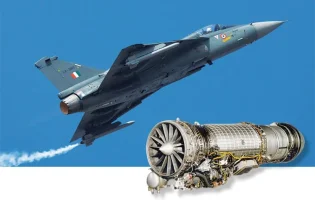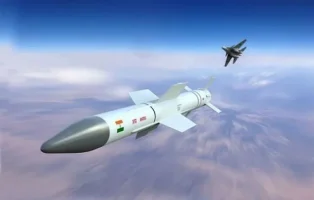- Views: 5K
- Replies: 9
In a major step towards strengthening its naval power, India's Bhabha Atomic Research Centre (BARC) is developing a new 200-megawatt (MW) nuclear reactor to propel its next generation of submarines.
This powerful reactor is slated for installation in the upcoming S-5 class ballistic missile submarines (SSBNs) and the six planned Project-77 class nuclear attack submarines (SSNs), representing a quantum leap in the country's indigenous defence capabilities under the Atmanirbhar Bharat initiative.
The new reactor, a pressurized light-water type fueled by enriched uranium, is a substantial upgrade from the 83-MW reactor currently used in the Indian Navy's Arihant-class submarines.
After nearly eight years of development, the design and computer simulation phases for this advanced power plant are complete, paving the way for its production.
A key feature of the reactor is its enhanced fuel efficiency, which will allow for extended refueling cycles of up to ten years. This significantly boosts the submarine's operational availability, as it reduces the lengthy and complex process of refueling, allowing the vessel to spend more time at sea and less time in port.
This advanced reactor system has been designed with the versatility to support two very different mission types.
For the S-5 class SSBNs, which form the core of India's sea-based nuclear deterrent, the reactor will be configured to provide a constant and reliable power supply for extended, stealthy patrols deep in the ocean.
These massive submarines, displacing over 13,000 tons, are designed to carry up to 16 long-range ballistic missiles, ensuring a credible second-strike capability.
In contrast, the Project-77 "hunter-killer" submarines require a reactor that can rapidly change power levels, enabling high speeds and agile manoeuvres to track and engage enemy warships and submarines.
The development of this high-capacity reactor is taking place at a critical time, as India seeks to secure its interests in the increasingly competitive Indo-Pacific region.
The strategic imperative is underscored by the rapid expansion of China’s naval forces, which now operate a large and modern fleet of nuclear-powered submarines.
By equipping its future S-5 and Project-77 submarines with this 200-MW reactor, India aims to field platforms with speed, endurance, and stealth capabilities that are on par with or exceed those of other regional powers.
The increased power will allow these submarines to operate submerged for months at a time, a critical advantage for both strategic deterrence and conventional warfare.
Building on decades of nuclear expertise, BARC has incorporated advanced safety features and noise-reduction technologies into the new reactor's design.
The development has also drawn upon operational experience from the INS Chakra II, a Russian-origin submarine leased by India, which was powered by a 190-MW reactor.
To ensure the system's reliability and safety before it is installed on a submarine, a land-based prototype will be constructed.
This follows the successful model used for the Arihant program, where a shore-based facility at Kalpakkam was used to test the reactor and train naval crews in its operation, ensuring a smooth and secure integration into India's growing nuclear fleet.





